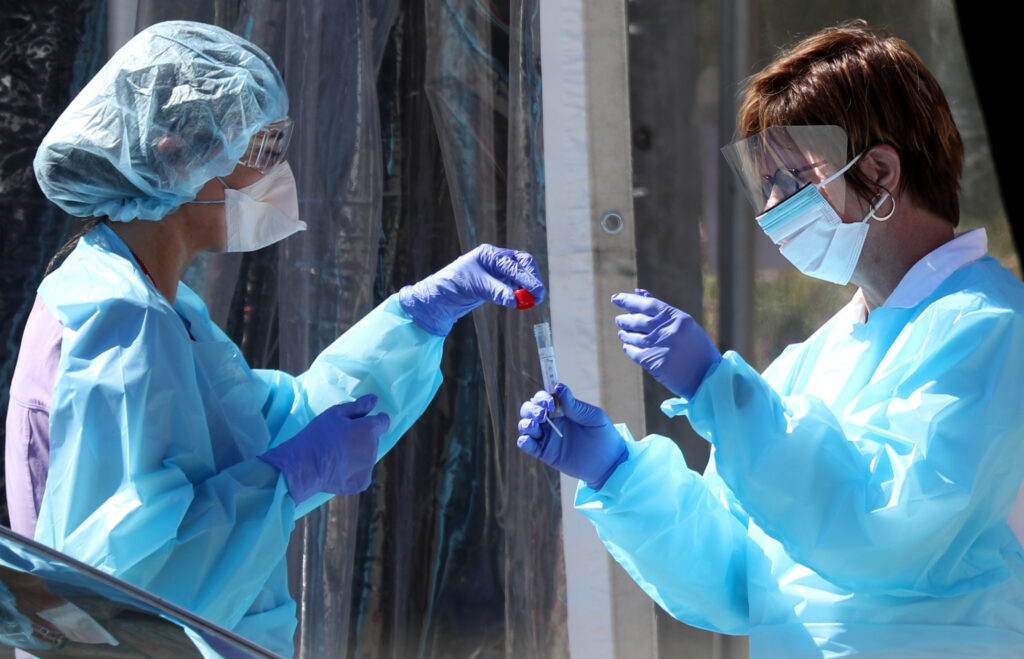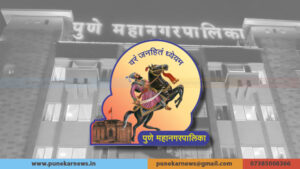Pune: Sero Survey finds 51.5% persons have developed antibodies to Coronavirus

Pune, August 17, 2020: The epidemiological and serological surveillance of Coronavirus disease (COVID19) in Pune City was conducted in five sub-wards (Prabhag) of the Pune Municipal Corporation (PMC) between 20th July and 5th August. The samples of 1664 were collected. The survey indicates that 51.5% of them have developed anti-bodies against SARS-CoV-2 (Coronavirus) without testing positive.
A substantive proportion of populations in these Prabhags have been previously infected by SARS-CoV-2. This indicates there has been extensive spread of infection in these Prabhags. The total population of these Prabhags is 3.66 lakh and samples of 1664 persons were checked.
“The presence of these antibodies does not necessarily indicate that the individual is resistant to subsequent infection. Neither is the high seroprevalence necessarily an indicator of population-level immune protection”, the report states.
The survey was conducted by the PMC, Savitribai Phule Pune University (SPPU), Indian Institute of Science Education and Research (IISER) Pune, Translational Health Science and Technology Institute (THSTI), Faridabad and Christian Medical College (CMC), Vellore.
According to the report, global data suggests that a significant proportion of SARS-CoV-2 infections are asymptomatic and remain undetected unless populations are actively screened. Understanding the extent of infection in the population permits a better understanding of the severity of COVID-19 and transmission dynamics.
Serological testing for antibodies against SARS-CoV-2 in a representative sample population can estimate the cumulative incidence of infection in the population. This study was undertaken to initiate generation of data important for gaining insights into the spread of the pandemic in Pune city and estimated the seroprevalence of antibodies against SARS-CoV-2 in five high-incidence prabhags (subwards).
Study settings: PMC administrative prabhags were divided into 3 strata; high-incidence strata (incidence >0.20%), medium-incidence (between 0.10% to 0.19%) and low-incidence (<0.10%) based on the cumulative incidence of confirmed COVID-19 cases by 01 June 2020 (based on granular data provided by PMC). Five wards were randomly chosen from the high-incidence strata. The selected wards were Yerwada, Lohiyanagar-Kasewadi, Rasta Peth-Ravivar Peth, Kasba Peth -Somwarpeth, Navi Peth-Parvati.
Sample size calculation: Assuming 5% seroprevalence, the study needed to recruit 1520 individuals to obtain a 95% Confidence Interval of +/- 1% after incorporating a design effect of 2.5 for the clustered sampling design. The study recruited 1664 individuals in the five selected wards.
Sampling strategy: An independent team of geospatial experts randomly selected 63 of 235 polygons with a roughly equal area covering the selected wards. The survey team started at the centre of the grid and collected samples from every fifth house. Every fifth home was sequentially selected in multi-occupancy tenement buildings. The study included all types of dwellings; hutments, tenements, apartments, bungalows falling within the selected grid. One adult individual was selected from each household using a matrix to ensure appropriate age/gender balance.
Consenting adults (≥ 18 years) from residential areas who self-reported no known acute illness at the time of collection were included in the study. No sampling was done in active containment zones.
Sample collection: The study team visited selected households and briefed the occupants about the survey objectives and procedures. Blood was collected after obtaining written consent.
SARS-CoV-2 antibody detection: IgG (Immunoglobulin G) antibodies against the receptor-binding domain (RBD) of the viral spike protein was detected using the highly specific (100%) and sensitive (84.7%) THSTI-RBD-ELISA assay.

KEY RESULTS
1. This study estimates 51.5% (Confidence Intervals (CI): 49.1-53.9%) seroprevalence in the five high-incidence Pune city prabhags sampled. The prevalence ranged from 36.1% (CI: 31.1-41.1%) in Kasba Peth-Somwar Peth to 65.4% (CI: 60.1-70.7%) in Lohiya Nagar-Kasewadi.

2. No difference in seropositivity was found between men and women.

3. Prevalence was lower in the older 66+ years population but was similar across age groups below 66

4. Hutments (62.0%) and Tenements (56.2%) have higher seroprevalence, although a significant proportion of the Apartment/Bungalow dwelling population were also seropositive. The seropositivity is significantly higher in hutment and tenement dwellers as compared to those in apartments and independent bungalows and also differ with size of the residence.

5. Participants from dwellings with shared toilets have higher seroprevalence, although a significant proportion of people living in residences with independent toilets were also seropositive.

CONCLUSIONS
• A substantive proportion of populations in these prabhags have been previously infected by SARS-CoV-2.
• This indicates there has been extensive spread of infection in these prabhags.
CAVEATS: The tests estimate the presence of IgG antibodies against SARS-CoV-2 in the population and suggest past infection. The presence of these antibodies does not necessarily indicate that the individual is resistant to subsequent infection. Neither is the high seroprevalence necessarily an indicator of population-level immune
protection.
INVESTIGATORS
Principal Investigators: Aarti Nagarkar (SPPU, Pune); Aurnab Ghose (IISER Pune)
Co-Investigators: Abhay Kudale (SPPU, Pune), LS Shashidhara (Ashoka University, on lien from IISER Pune); Susmita Chaudhuri and Guruprasad Medigeshi (THSTI, Faridabad).
Advisors: Jacob John (CMC, Vellore); Gagandeep Kang (CMC, Vellore and formerly at THSTI, Faridabad); Vineeta Bal (IISER Pune); Satyajit Rath (formerly at NII, New Delhi).





